6. Today is the day of the Equinox (this year in March 20), i.e. when the night (-nox, -notch, -Nut) is equally (equi-. equa-) long as the day. In the TV news program they have just informed us that the sun will pass the equator from the southern hemisphere up to our northern hemisphere at 22.24, which made me infer that for people living in the east it would instead be past midnight. ... Ecclesiastically, the equinox is reckoned to be on 21 March (even though the equinox occurs, astronomically speaking, on 20 March in most years) ...
Spring is in the air:
And the Sun will continue to rise higher and higher with summer ahead. South of the equator, on the other hand, it must be the opposite, it must be autumn equinox with a low-wintry-sky-a-head.
The star charts created by the computer program Cartes du Ciel must depend on the place of the observatory and I decided to change it to that of Easter Island in order to see what their sky would currently look like. Easter Island is located at longitude 109º to the west (of the Greenwich observatory in England) and at latitude 27º to the south (of the equator):
The calendar dates should be the same on Easter Island as those north of the equator.
And also nighttime should in principle fall at the same time as north of the equator. However, whereas on Easter Island the dates would ideally be the same, the Sun must rise and descend according to the conditions of the local time, and perhaps my input 21h therefore has to be changed. It depends on the attributes of the program. This question could easily be answered: 21h was not a good time for star observations. Instead I took the opportunity to look at the Easter Island sky at the π day of March 14 (→ 314) at 03h in the early morning:
The sky is evidently 'upside down' with Mars above the bright star Capella (α Aurigae, the Goat Mother) and below the Heavenly Gate (ζ Tauri = 123 Tauri).
... Zeta (uppercase Ζ, lowercase ζ; Greek: ζήτα ... is the sixth letter of the Greek alphabet. In the system of Greek numerals, it has a value of 7. It was derived from the Phoenician letter Zayin. Letters that arose from zeta include the Roman Z and Cyrillic З ... Zayin (also spelled Zain or Zayn or simply Zay) is the seventh letter of many Semitic abjads ... It represents the sound [z]. The Phoenician letter appears to be named after a sword or other weapon. (In Biblical Hebrew, 'Zayin' means sword, and the verb 'Lezayen' means to arm. In modern Hebrew, 'zayin' means penis and 'lezayen' is a vulgar term which generally means to perform sexual intercourse and is used in a similar fashion to the English word fuck, although the older meaning survives in 'maavak mezuyan' (armed struggle) and 'beton mezuyan' (armed, i.e., reinforced concrete). The Proto-Sinaitic glyph according to Brian Colless may have been called ziqq, based on a hieroglyph depicting a 'manacle' ... But this we already knew:
Equally clear should be the fact that the night sky above appears to turn - although in reality it is this 'little piece of dung' (the earth) we live on which is being rolled along: ... Watching TV does give some knowledge. For instance was I told that modern science now had discovered that the scarab beetle had the unique ability to orient itself from the direction of the Milky Way. Surely, I thought, this must once upon a time had been well known (common knowledge) ...
... The two great stars, which marks the summit and the foot of the Cross, having nearly the same right ascension, it follows that the constellation is almost perpendicular at the moment when it passes the meridian. This circumstance is known to the people of every nation situated beyond the Tropics or in the southern hemisphere. It has been observed at what hour of the night, in different seasons, the Cross is erect or inclined. It is a time piece, which advances very regularly nearly four minutes a day, and no other group of stars affords to the naked eye an observation of time so easily made. How often have we heard our guides exclaim in the savannahs of Venezuela and in the desert extending from Lima to Truxillo, 'Midnight is past, the Cross begins to bend' ... Crux lies in the Milky Way, - here a brilliant but narrow stream three or four degrees wide, - and is noticeable from its compression as well as its form, being only 6º in extent from north to south, and less in width, the upper star a clear orange in color, and the rest white; the general effect being that of a badly made kite, rather than a cross ... ... The symbol Σ is currently used as an expression for 'sum'. The Phoenician shin is oriented in another way, similar to how Cassiopeia is read in the night when in a low position - as Celestial W when below the pole, in contrast to the Celestial M when above it ...
Earlier I thought there had been a mistake when they saw the same sky at 2:38 A.M. as at 4:38 A.M. But now, after having contemplated the curious retrograde motions of Mars it seems reasonable to understand First Father as a kind of aspect of the planet Mars. First he will be conveyed in a canoe and then his canoe will sink, bringing him to the Place of Creation:
|
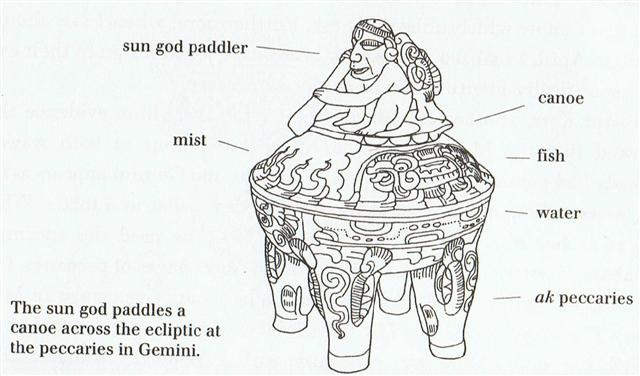

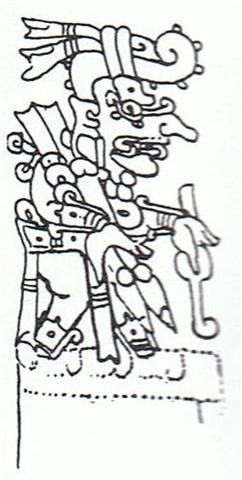

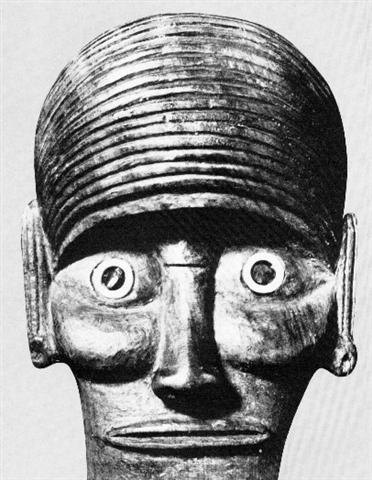


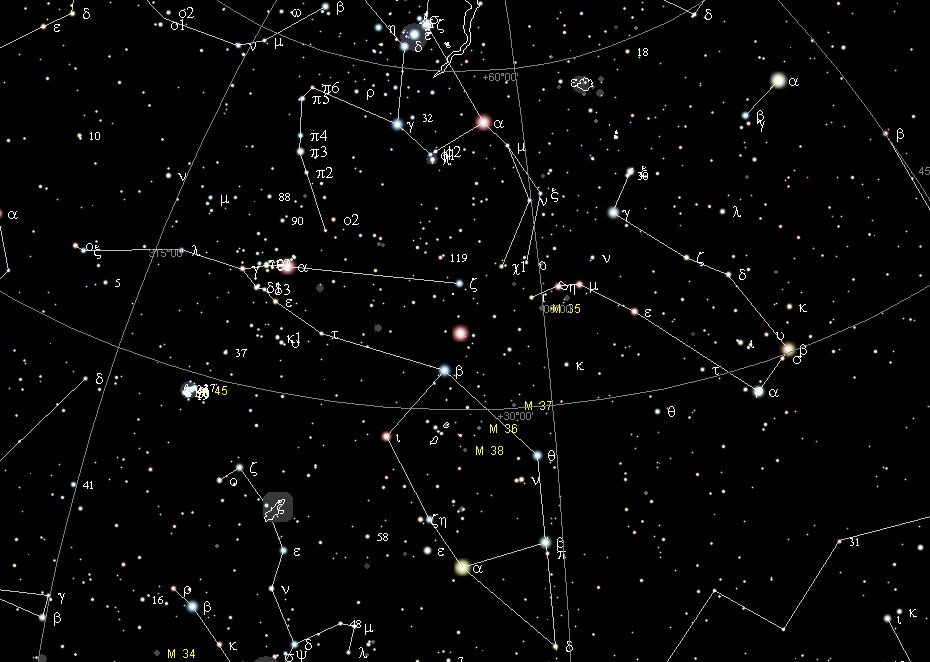
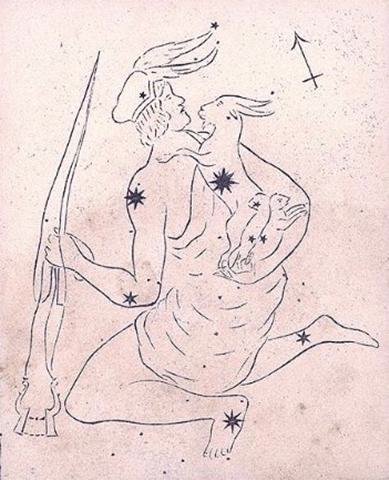

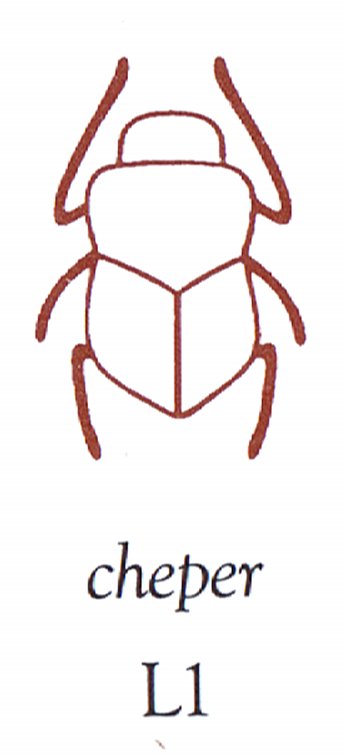

.jpg)
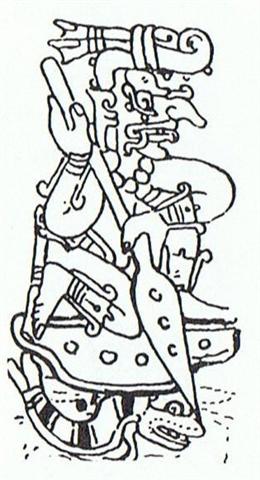
.jpg)
.jpg)